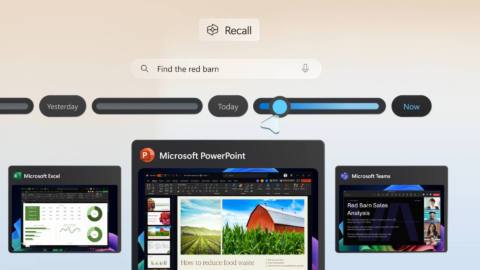Update: Microsoft has been in touch to clarify that “this week’s news from Microsoft on Windows 10 ESU pricing was only for Commercial Organizations and EDU customers.”
“Of note, the Windows IT Pro blog has been updated to include the following: 'The details and pricing structure outlined in this post apply to commercial organizations only. Details will be shared at a later date for consumers and home users on our consumer end of support page. Educational organizations can find tailored information about Windows 10 end of support in the Microsoft Education Blog.'
Our headline has been altered to reflect this, and the original story is below.
Windows 10 is, I'm afraid to say, not long for this world. While Microsoft has confirmed that the ageing OS will still receive free security updates until October 14, 2025, after that you'll have to be part of the ESU, or “Extended Security Updates” program, and that costs money. Depending on your use case, that could be much more than you expected.
In a recent blog post, Microsoft listed out its plans for extended support, including the revelation that if you want to buy an activation key to enrol a Windows 10 device in the ESU, you'll need to cough up $61 per device for year one (via The Register). If that figure seems steep, then prepare to hold on to your collective hats, as Microsoft has also announced that “the price will double every consecutive year for a maximum of three years”.
It's worth noting that the price is also cumulative, meaning that if you decide to join the program in year two, you'll have to pay for year one as well.
There are some exceptions worth paying attention to. For one, Windows 10 devices used to access Windows 11 Cloud PCs through Windows 365 will receive security updates without taking any additional steps as part of the Windows 365 existing licence, provided you've committed for over a year.
You're also entitled to receive a 25% discount on ESU licensing if you use a cloud-based update management solution like Microsoft Intune or Windows Autopatch.
But perhaps the biggest concession is the decision to allow Microsoft Education customers to pick up ESU licences for $1 a pop over the first year, $2 for the second, and $4 for the third. While that might cause a sigh of relief from IT admins working for schools where upgrading to Windows 11 might be difficult for a variety of reasons, it does strike as a very unbalanced pricing model.
As we pointed out when we first covered Microsoft's plans back in December, many will have chosen not to upgrade to Windows 11 due to the TPM and supported CPU requirements that technically rule out a number of still-performant machines from making the switch.
If you own an unsupported machine, there are still third-party methods to force Windows 11 to install regardless, but it's not a great look forcing users to go elsewhere for a fix, or alternatively cough up a substantial amount of cash simply to keep securely using an operating system that's still perfectly valid and supported by most software.

Windows 11 review: What we think of the latest OS.
How to install Windows 11: Our guide to a secure install.
Windows 11 TPM requirement: Strict OS security.
More than that, however, is the sheer imbalance of the pricing here. Really, you're getting the same level of security support regardless of how you qualify, so to force regular users to pay an inordinately large amount to receive updates, and then to exponentially raise it while others pay so much less, seems unfair.
While Windows 11 is now a perfectly decent operating system—after years of significant updates that still seem to have failed to significantly improve the uptake—those of you who planned on clinging on to Windows 10 until the bitter end have a time limit on your decision making, and a potentially significant financial choice to make. And them's, my friends, appear to be the breaks.






